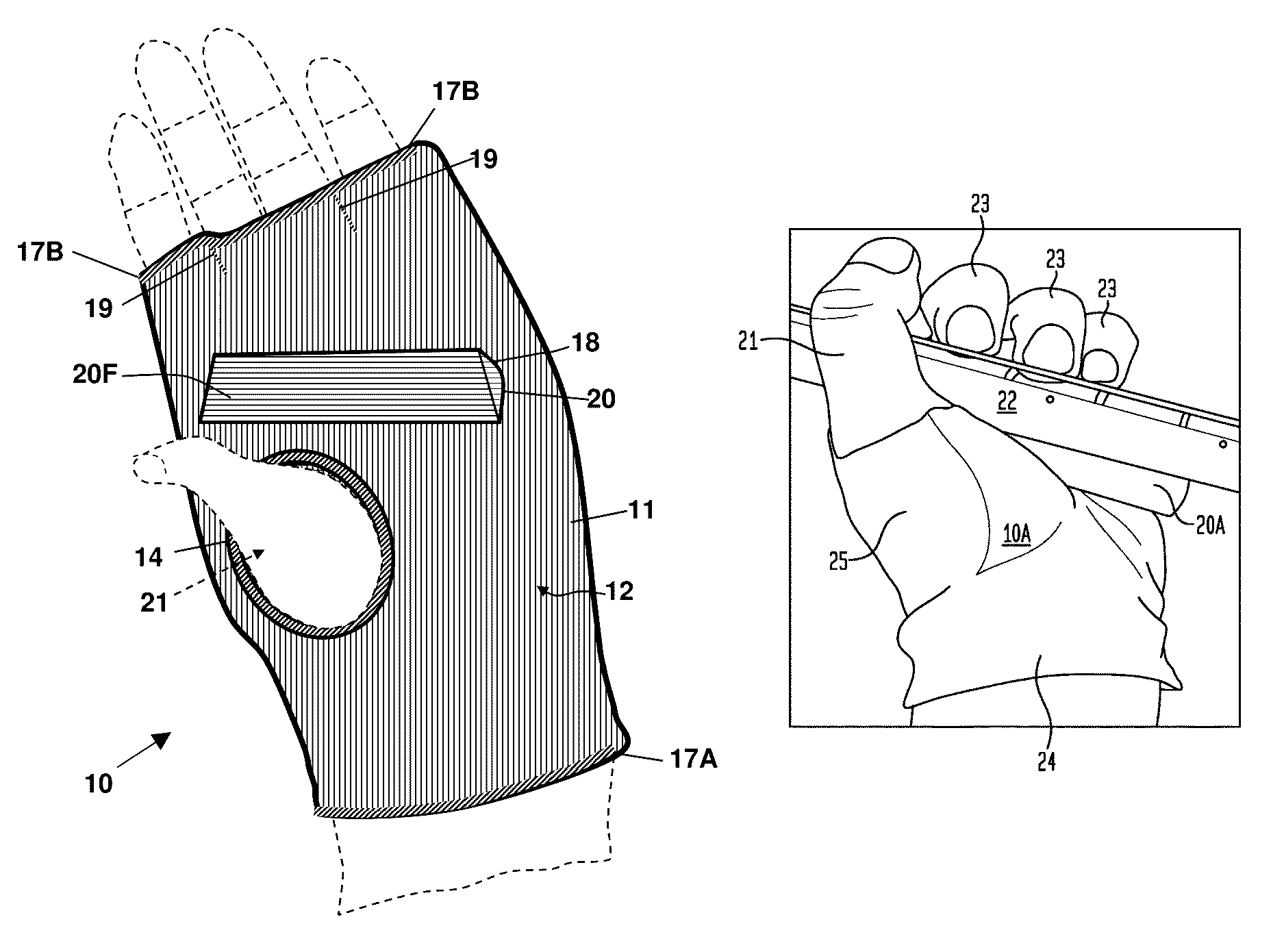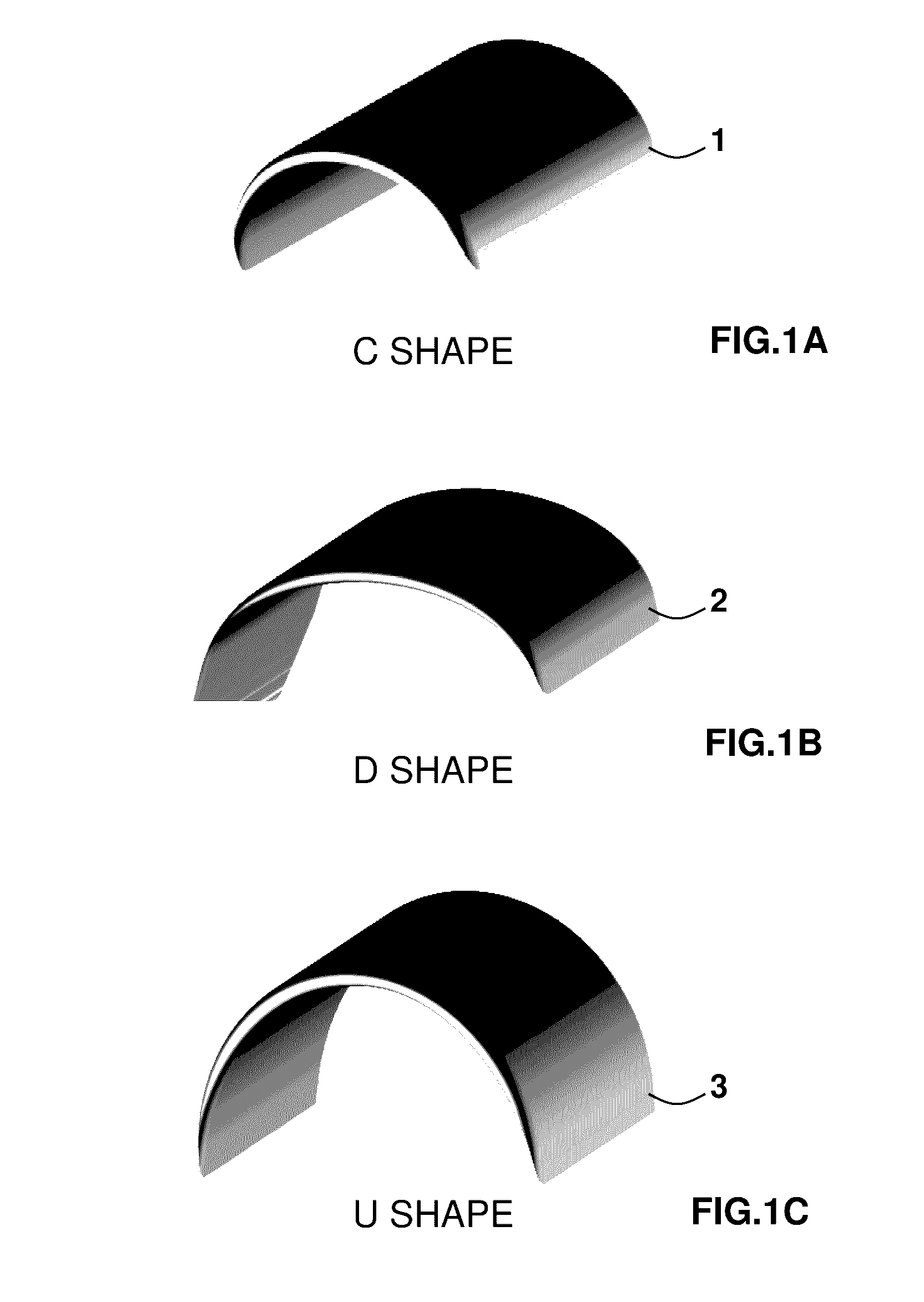Method for increasing the shape and effective thickness of the neck of a stringed musical instrument
a stringed musical instrument and effective thickness technology, applied in the direction of instruments, music supports, music aids, etc., can solve the problems of unsuitable support, distorting sound, and not addressing the instability of the grip
- Summary
- Abstract
- Description
- Claims
- Application Information
AI Technical Summary
Benefits of technology
Problems solved by technology
Method used
Image
Examples
first embodiment
[0059]FIG. 8 is a flow chart of the method of this invention. In step 71 one provides a spacer for fitting the palm of the hand of a string instrument player to the neck of a string instrument. In step 72 one provides for securing the spacer to the palm of the hand of the string instrument player or to the neck of the string instrument. In step 73 one secures the spacer to the palm of the player or to the neck of the string instrument.
second embodiment
[0060]FIG. 9 is a flow chart of the method of this invention which is a modification of the method of this shown in FIG. 8. Step 71 is as described above. In the next step, which is step 75, one provides a support for securing the spacer to the palm of the hand of the string instrument player. In step 76, one fastens the spacer to the support before or after securing the support to the palm of the player. In step 77, with the support fastened to the hand of the player and with the spacer positioned over the palm of the player, the player grasps the string instrument neck with the spacer located between the palm and the string instrument neck. It is an important feature of the invention that the spacer has a low enough coefficient of friction to slide freely along the neck of the string instrument.
third embodiment
[0061]FIG. 10 is a flow chart of the method of this invention. Step 78 provides a spacer precisely molded or shaped to fit the palm of the hand and to fit the neck of a string instrument. In step 79 secure the spacer to the palm of the hand or to the neck of a string instrument. Techniques for forming molds or shaping a device to fill an open space are well known to those skilled in the art. It is known to create a plaster of Paris body part followed by use of CAD / CAM, CNC machines and 3D printing devices to form a device which fits the mold. Thus, those skilled in the art will understand how to form a spacer which fits between the palm of the hand of the player and the neck of the string instrument, as required by step 78. Again in this case, it is an important feature of the invention that the spacer has a low coefficient of friction adapted for sliding of the spacer freely along the neck of the string instrument.
Spacer Materials
[0062]Alternatives materials for the spacer other th...
PUM
 Login to View More
Login to View More Abstract
Description
Claims
Application Information
 Login to View More
Login to View More - R&D
- Intellectual Property
- Life Sciences
- Materials
- Tech Scout
- Unparalleled Data Quality
- Higher Quality Content
- 60% Fewer Hallucinations
Browse by: Latest US Patents, China's latest patents, Technical Efficacy Thesaurus, Application Domain, Technology Topic, Popular Technical Reports.
© 2025 PatSnap. All rights reserved.Legal|Privacy policy|Modern Slavery Act Transparency Statement|Sitemap|About US| Contact US: help@patsnap.com



